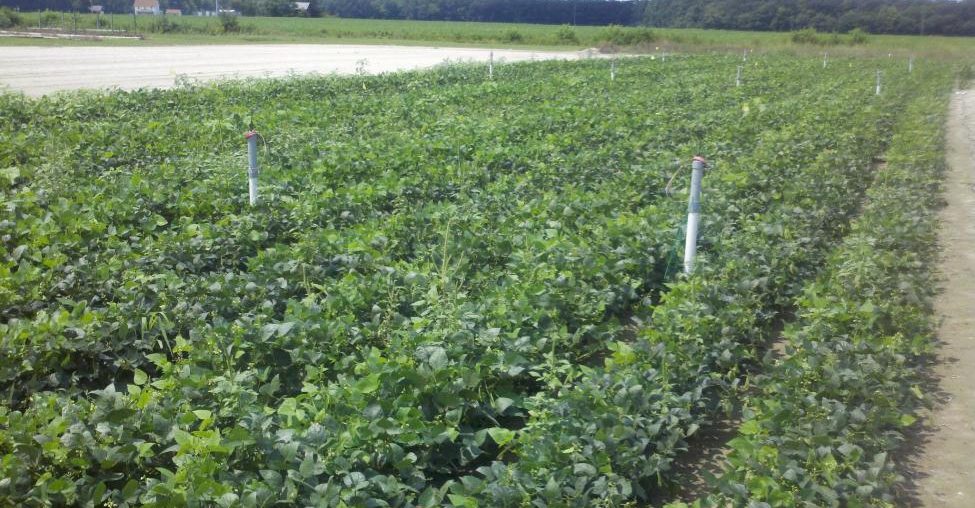
Irrigated Lima Bean Yield & Quality
- Ask Extension
- Health & Well-being
-
Agricultural Programs
- Agribusiness
- Animal Science
- Beginning Farmer Program
- Commercial Crops
- Commericial Horticulture
- Delaware Soil Testing Program
- Disease Management
- Farm Vitality and Health Project
- Irrigation
- Nutrient Management
-
Insect Pest Management
- Insect Trapping Program
- IPM Hot Topics
- Commercial Field Crop Insect Management
- Commercial Field Crop Disease Management
- Commercial Fruit & Vegetable Crop Pest Management
- EIPM Implementation Projects
- Pollinators
- Research and Extension Demonstration Results
- Brown Marmorated Stink Bug (BMSB) Management, Research, and Resources
- Publications
- Pesticide Safety Education Program
- UD Plant Diagnostic Clinic
- Variety Trials
- Weed Science
- Certified Crop Advisor Program
- Poultry Biosecurity
- 4-H
-
Horticulture
- Climate Variability and Change
- Delaware Soil Testing Program
- Forestry
- Lawn and Garden
- Master Gardeners
- Master Naturalist Program
-
Nutrient Management
- Nutrient Management Certification
- Continuing Education for Nutrient Management
- Nutrient Management Planning Resources
- Commercial Nutrient Handler Resources
- Poultry Litter and Manure Management
- Turf Management
- Agriculture Notebook
- Horticulture Handbook
- Agriculture & Horticulture Handbooks
- Crop Production
- Soil Fertility
- Delaware Climate Change Coordination Initiative (DECCCI)
- Salt Impacted Agricultural Lands


Research
Research will be performed to determine the ideal irrigation management strategy for lima beans. An automatic irrigation control system will be utilized to schedule irrigation based on actual soil moisture levels. Yield and quality differences will be compared across 4 irrigation treatments and the economics of each intensity level will be determined and shared with producers. Irrigation research for baby lima beans will be performed on the University of Delaware, Research and Education Center farm in Georgetown.
The field trials will have 4 replications of two varieties of baby limas (one less stress tolerant and one more stress tolerant) with four irrigation treatments (8 plots total per replication). Plots will be two rows, 25’ in length.
Irrigation will be provided by two lines of low flow (0.22 gpm/100’) drip tape per plot.
Treatment
Irrigation treatments will consist of:
Treatment 1 – No Irrigation
Treatment 2 – Irrigation will be triggered when the plant available water (PAW) reaches 50% of capacity throughout all crop stages; irrigation will be interrupted when the soil reaches field capacity (100% available water).
Treatment 3 – Irrigation will be triggered when the PAW reaches 35% of capacity throughout all crop stages; irrigation will be interrupted when the soil reaches field capacity (100% available water).
Treatment 4 – Irrigation will be triggered during vegetative growth stages at 35% of PAW followed by a 50% PAW trigger during reproduction.
Watermark 950T matric potential sensors will be placed at 4”, 12” and 18” depth within each plot and will be hard wired to a Campbell CR 1000 data logger. The data logger will collect and record the real time soil moisture content every half hour. The data logger control ports will energize a 24VAC solenoid valve to initiate irrigation whenever the measured soil moisture levels are below the set point.
Each plot will be evaluated for plant effects, harvestable yield, and quality. Plots will be harvested as close to ten percent dry pods as possible. Plants will be cut off at soil level and weighed for fresh weights. To determine maturity at harvest, pods will be stripped from five harvested plants from each plot and counted as full, flat or dry. The plants and pulled pods will be fed into a stationary FMC viner to shell. After cleaning of any trash, shelled beans will be weighed to determine yield. Plant stress measurements such as canopy temperature or spectral reflectance will also be collected at points throughout the growth cycle.
Presentations were made at the 2014 and 2015 Delaware Ag Week to present the results of this three-year study.
The University of Delaware is an Equal Opportunity Institution and Provider. Visit UD’s Office of Equity & Inclusion to learn more.
Additional Links
531 South College Avenue Newark, DE 19716 (302) 831-2501
